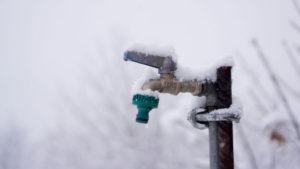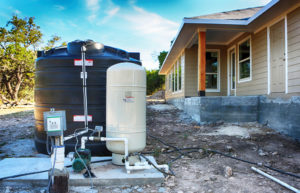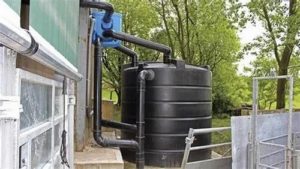Are you tired of relying on municipal water supplies or expensive bottled water?
Do you dream of having a self-sufficient off-grid water source that’s both cost-effective and environmentally friendly?
If so, then it’s time to consider constructing your own DIY creek water collection system!
Not only can this system provide a reliable supply of clean drinking water, but it also offers an innovative solution for sustainable living.
We’ll explore the steps and materials needed to build such a system, so you can enjoy the benefits of fresh, pure creek water right in your own backyard.
Location, Location, Location
Identify a suitable location for your creek water collection system, taking into account factors such as water quality, flow rate, and accessibility. Ideally, choose a location that is downstream of any potential sources of contamination and has a consistent flow rate.
First and foremost, choose a location that is downstream of any potential sources of contamination, such as agricultural runoff, industrial waste, or sewage.
This will help ensure that the water is free from harmful pollutants and is safe for consumption.
Next, look for a location with a consistent flow rate.
A steady flow rate will provide a reliable source of water, and it will be easier to design and maintain a collection system.
Avoid areas with rapid flow rates, as they can cause erosion and make it difficult to capture the water.
Accessibility is a important consideration.
The location should be easily accessible for maintenance and repair purposes.
Ideally, the site should be within walking distance or have a clear path for accessing the system.
By taking these factors into account, you can ensure that your creek water collection system is reliable, safe, and easy to maintain.
System Design
Determine the size and design of your creek water collection system based on your water needs and the availability of materials. Consider factors such as the height of the intake, the size of the collection tank, and the number and size of the distribution pipes.
When designing a creek water collection system, it’s essential to consider the size and design based on your water needs and the availability of materials.
Start by assessing your water requirements, considering factors such as the number of people in your household, the size of your garden, and your desired water pressure.
Then, evaluate the availability of materials in your area, taking into account the height of the intake, the size of the collection tank, and the number and size of the distribution pipes.
For instance, if you live in a hilly area, you may need to install a higher intake to ensure proper water flow.
If you have limited space, you may need to opt for a smaller collection tank and pipes.
By carefully considering these factors, you can create a customized creek water collection system that meets your specific needs and maximizes your water collection potential.
Intake and Inflow Devices
Design and install an intake system that allows water to enter the collection tank while preventing debris and sediment from entering. Common inflow devices include screens, filters, and intake tubes.
To design and install an effective intake system for your rainwater collection tank, it is essential to prioritize the prevention of debris and sediment from entering the system.
Common inflow devices such as screens, filters, and intake tubes can help achieve this goal.
Screens are typically located at the top of the intake system and are designed to physically block larger debris and sediment from entering the system.
Filters, on the other hand, use a combination of materials and mesh sizes to capture smaller particles and prevent them from passing through to the collection tank.
Intake tubes can also be used to direct water flow into the collection tank while keeping debris and sediment out.
It is important to select the appropriate inflow device based on the specific needs of your rainwater collection system and the amount of debris and sediment present in the water source.
Proper installation and maintenance of these devices can ensure that your system operates effectively and efficiently, and that the water collected is safe and free from contaminants.
Collection Tank
Choose a water-tight and durable material for the collection tank, such as plastic or concrete. Consider factors such as the capacity of the tank, the material of construction, and the accessibility of the tank for cleaning and maintenance.
When selecting a collection tank for your rainwater harvesting system, it is essential to choose a water-tight and durable material that can withstand the test of time and exposure to the elements.
Plastic and concrete are two popular options that offer excellent durability and resistance to water damage.
The capacity of the tank is a critical factor to consider, as it will determine how much rainwater can be collected and stored for later use.
A larger tank will provide more storage capacity, but may also be more expensive and take up more space.
On the other hand, a smaller tank may be more affordable and consume less space, but may not provide enough storage capacity for your needs.
The material of construction is also an essential consideration, as it will affect the tank’s durability and maintenance requirements.
Plastic tanks are lightweight, easy to install, and require minimal maintenance, but they may be more prone to cracking and leaking over time.
Concrete tanks, on the other hand, are more durable and long-lasting, but they can be more expensive and require more extensive installation and maintenance.
Accessibility of the tank for cleaning and maintenance is important.
The tank should be designed to allow easy access for cleaning and inspection, and the materials used should be easy to clean and resistant to bacterial growth.
A well-designed collection tank will provide years of trouble-free service, collecting and storing rainwater for your home or business.
Distribution Piping
Install a distribution piping system that delivers water from the collection tank to your home or other point of use. Use appropriate materials for the pipes, such as PVC or CPVC, and ensure that the pipes are properly insulated and supported.
Installing a distribution piping system to deliver water from the collection tank to your home or point of use requires careful consideration and proper planning.
To ensure a reliable and efficient system, it is essential to use high-quality materials for the pipes, such as PVC or CPVC.
These materials are durable and resistant to corrosion, ensuring a long lifespan for your distribution pipes.
Proper insulation and support are also important to maintain the optimal temperature of the water and prevent damage to the pipes.
Insulation helps to minimize heat loss and prevent the pipes from freezing in cold climates, while support systems such as hangers and anchors ensure that the pipes are securely held in place and won’t be subject to stress or strain.
Furthermore, it is important to ensure that the pipes are properly sized and configured to meet your water needs.
A professional installation should include careful calculations to determine the appropriate pipe size and layout to deliver water efficiently and effectively.
This includes considering factors such as water pressure, flow rate, and the number of fixtures and appliances that will be connected to the system.
A well-designed and properly installed distribution piping system is essential for a functional and reliable rainwater harvesting system.
By selecting the right materials, providing proper insulation and support, and configuring the system to meet your water needs, you can enjoy a reliable source of clean water for your home or other point of use.
Filtration and Disinfection
Incorporate filtration and disinfection systems to ensure the water is safe for consumption. Common filtration methods include sedimentation, carbon filtration, and ultraviolet (UV) light disinfection.
When it comes to ensuring the safety of your drinking water, incorporating filtration and disinfection systems is important.
There are several effective methods to choose from, each with its own strengths and benefits.
Sedimentation, for instance, is a physical process that removes suspended particles and contaminants from the water, leaving it clear and free of impurities.
Carbon filtration, on the other hand, is a chemical process that uses activated carbon to remove organic compounds and chlorine byproducts, resulting in a cleaner and fresher taste.
Ultraviolet (UV) light disinfection is a non-chemical method that uses UV light to kill bacteria and viruses, providing a powerful barrier against waterborne pathogens.
Regardless of which method you choose, it is important to maintain and regularly clean your filtration and disinfection systems to ensure their continued effectiveness.
By incorporating these systems into your water treatment process, you can enjoy peace of mind knowing that your drinking water is safe and healthy for consumption.
Pump and Controls
Install a pump and control system to transfer water from the collection tank to the distribution piping system. Choose a pump that is suitable for the elevation difference between the intake and the point of use, and install controls that regulate the flow rate and pressure.
Installing a pump and control system to transfer water from the collection tank to the distribution piping system is a critical step in any successful rainwater harvesting system.
The first step is to choose a pump that is suitable for the elevation difference between the intake and the point of use.
This will ensure that the pump can handle the pressure and flow rate required to deliver water to the point of use.
Look for pumps with adjustable flow rates and pressures to ensure that the system can meet the demands of your household.
Next, install controls that regulate the flow rate and pressure.
These controls can include sensors that monitor the pressure and flow rate, as well as timers that can turn the pump on and off at specific intervals.
This will help to prevent over-pumping and ensure that the system operates efficiently.
Consider installing a backup pump and/or a redundant pump system to ensure that the system can continue to function even if one pump fails.
With the right pump and control system in place, you can rest assured that your rainwater harvesting system will provide a reliable source of clean water for your household.
Maintenance and Monitoring
Regularly inspect and maintain the system to ensure proper function and quality of water. Monitor water levels in the collection tank, inspect the intake and distribution pipes for leaks or damage, and test the water quality regularly.
Regular inspection and maintenance are important to ensure the proper function of your rainwater harvesting system and the quality of the collected water.
It is essential to monitor water levels in the collection tank to ensure that it is not overflowing or under-collecting.
Inspect the intake and distribution pipes for any signs of leaks or damage, as even small cracks can cause significant water loss and contamination.
Moreover, regular testing of the water quality is important to ensure that it is safe for consumption.
This can be done by checking the pH levels, turbidity, and bacterial contamination.
By regularly inspecting and maintaining the system, you can ensure that it is functioning properly and that the collected water is safe and clean for consumption.
Want More? Dive Deeper Here!
Hey there! If you’re the type who loves going down the rabbit hole of information (like we do), you’re in the right spot. We’ve pulled together some cool reads and resources that dive a bit deeper into the stuff we chat about on our site. Whether you’re just killing time or super into the topic, these picks might just be what you’re looking for. Happy reading!
- Rainwater Cisterns: Design, Construction, and Treatment
- Sustainable Water Systems for Batipa Field Research Isnstitute
- Texas Extension Disaster Education Network (EDEN) – Providing credible and reliable information related to disaster preparedness, mitigation and recovery.
- College of Agriculture, Life and Environmental Sciences | The University of Arizona






